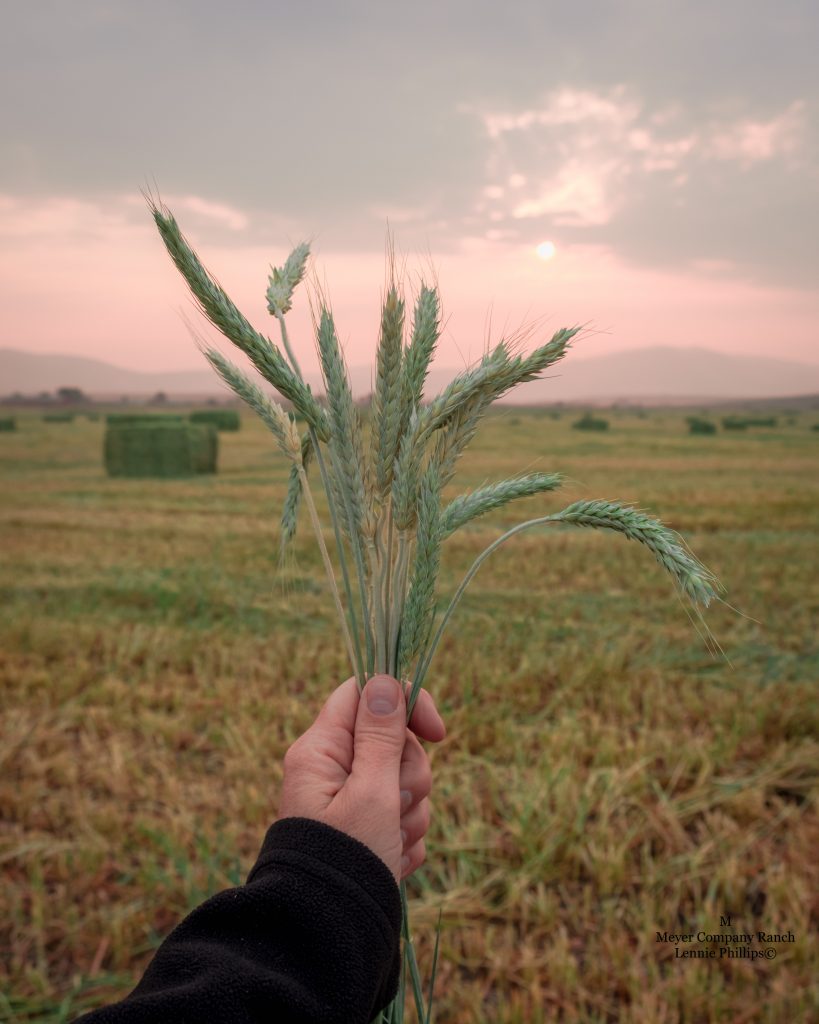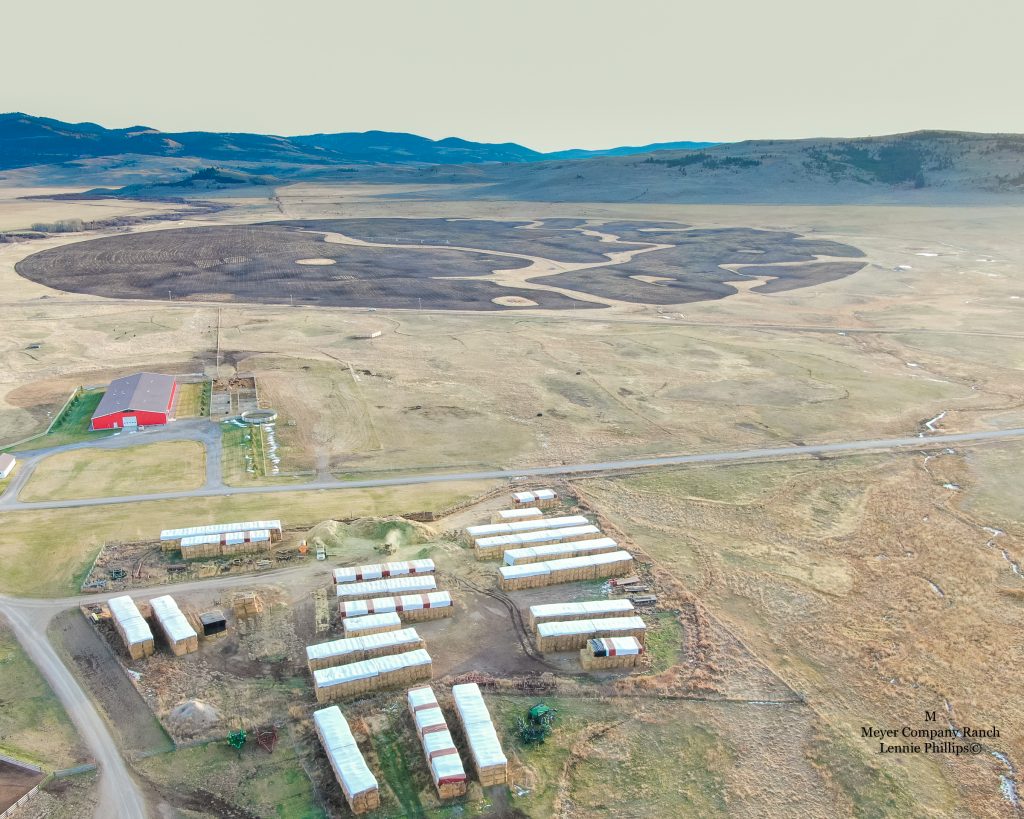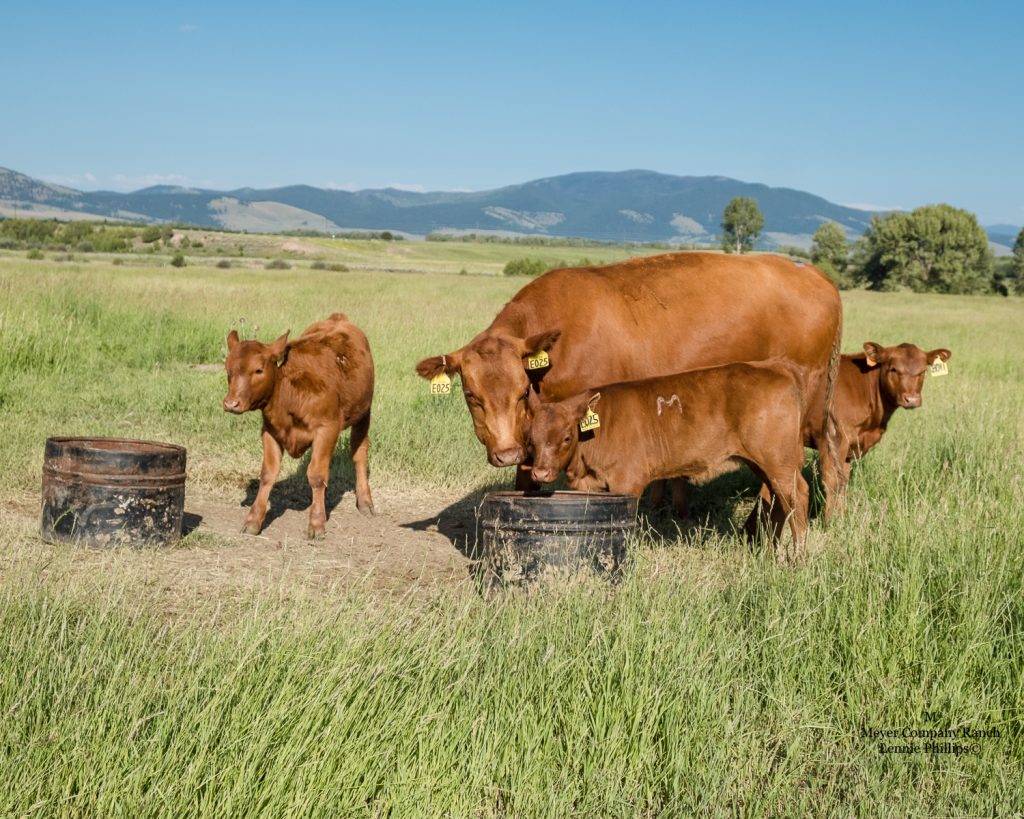We put farming and nutrition together as we feel it goes hand in hand when talking about cattle and livestock feed. Our animals are on a completely plant based diet therefore the higher quality grasses we can grow and hay we can put up will go directly back into the health and growth of our livestock.
We strive to have a limited footprint while maintaining soil that is nutrient dense, healthy and increases the quality of the overall ranch environment.
There isn’t one simple answer when it comes to increasing soil health, with this in mind we use different techniques to increase productivity, while working to reduce our environmental impact.
Our first choice is to use organic matter, which in our case is the bi-product of a recently living organism that has decayed. There are various ways to attain organic matter, a few of the methods that we implement are manure, cover crops, fertilizers and retained plant matter.


For retained plant matter, we will leave certain plants on purpose or the remainder of plant residues that exist after having harvested a crop. These plants will decompose to the point of no longer being recognizable, turning into what we call organic matter.
When it comes to manure and fertilizers we have found a benefit in spreading it on both pivots and grassland pastures. This serves as a reservoir of nutrients for crops and grasses, it also increases nutrient exchange and retains moisture, among other things.
There are several different methods of irrigation, which one you use will depend on the type of ground you have as well as your water right which dictates the amount of water you have available. For those unfamiliar with irrigation, listed below are the types we use and how they work.
Hand lines – They work almost exactly as they sound, they are sprinkler systems that are moved around by hand to cover/irrigate as much area as possible.
Flood Irrigation – When using a system of ditches and dams (made from tarps) to cover as much land as possible with water.
Wheel lines – Somewhat portable irrigation systems that are set for a specific length/period of time and then moved using a set of wheels which are attached to each pipe.
Pivots – A pivot or also called a center pivot is a large stationary irrigation system that is capable of irrigating in a circular pattern.
Examples of crops we have experimented with are radishes, turnips, and rye grass as a cover crop. They provide a lot of forage and work well to penetrate deep into the soil, alleviating compaction while helping with increasing nitrogen levels. This led to searching for other crops that could provide an abundant return and we came across corn. We have found that we can plant 2 pivots with corn and it will give us around 90-120 days of grazing for approximately 700 head of cows. As our climate is a colder one, we only get around 60 growing days before a frost, but even with this limitation, the corn has been a successful endeavor.

Annually we grow alfalfa and grass hay for the livestock for winter feed and possibly have some for sale. As of late we have been putting up triticale hay as well, it provides excellent roughage and the cattle love it.
Weeds are a common issue among anyone living on a ranch, farm, or in the country. They occur both naturally and forcefully, being spread by equipment, people and both wild and domestic animals. In ranching a main cause of weeds and the spread of some invasive species are due to over grazing. We are highly sensitive to this, we make sure that our cattle are rotated to new pastures regularly, while still leaving ample forage in the pasture they came out of.
The best way to stop weeds is to disrupt weed growth, sometimes this is easier said than done especially when dealing with several thousand acres. Due to the size of the ranch we have found the best method for weed management is with chemical control methods.
We achieve this using several different application techniques to include but not limited to spray rig, helicopter, and hand spraying
Regularly we have our soil and forage tested for nutrients, this tells us what we are deficient in so that we can do our best to supplement both the soil and the cattle to ensure the healthiest end product possible.
When testing soils, most likely there will be some kind of deficiencies in nutrients and minerals. This can lead to decreased yields in crops as well as a lesser quality product. For us, we have found that fertilizing using plant nutrients is one of the best methods to improve the fertility of the soil while increasing a plants yield and overall health.

As far as the livestock are concerned the nutrient levels in their feed affects their overall health as well. We will supplement the livestock with a custom balance mineral mix to help them achieve optimal overall production.
